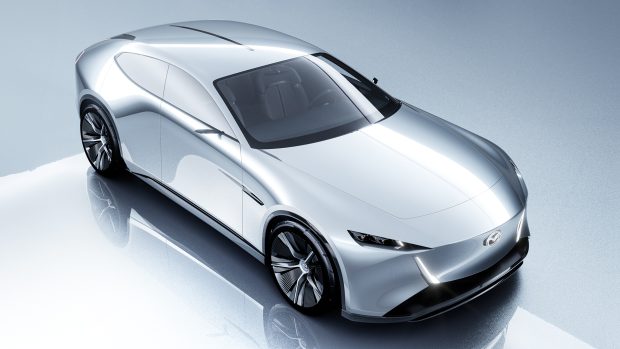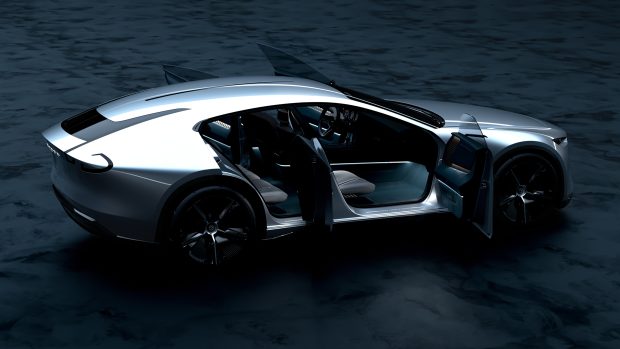-
Car Reviews
- Car News
-
Car Comparisons
Latest comparisons
- Chasing Deals
It’s not all cars at motor shows, sometimes it’s about lowering carbon dioxide emissions in unique ways
The Mazda Vision X-Coupe concept revealed at the 2025 Japan Mobility Show is a sleek, four-door grand tourer, but there’s more to it than meets the eye.
It may not be battery electric, yet Mazda claims the vehicle is carbon negative.
That means the vehicle ecosystem removes more carbon from the atmosphere than it produces. Or at least, that’s the theory when it is run on Algae-derived bio fuel and teamed with mobile carbon capturing devices.
The example outlined to Australian media is that a B-segment car (like Mazda 2 or CX-3) that produces around 100g of CO2 per kilometre, would actually remove 10g/km from the atmosphere when driven on biofuel with the Mobile Carbon Capture device.
Exhaust gasses are redirected through an absorption device which plucks 20 percent of the CO2 and stores it in an unpressurised tank, currently using Zeolite pellets.
The apparatus currently increases fuel consumption by 2-3 percent and weighs 50kg. It is essentially the next step beyond catalytic converters and petrol particulate filters.
We’re told the prototype’s CO2 will fill up in 50-200km, after which it needs to be exchanged for an empty one.
Naturally, this will require significant infrastructure investment if it reaches production.
The stored carbon in tanks from cars can then be used to make plastic items, such as disposable forks and cups.
This technology will improve with more investment but is clearly not production ready yet.
The remaining 90 percent reduction in exhaust carbon dioxide comes from bio-fuel made using algae.
The microorganisms intake CO2 and store it while living, then oil is extracted before being refined into gasoline on which a car can run.
There are other useful byproducts from the process, says Mazda, including supplements, fertilizer and cattle feed.
Algae-derived biofuels are not new on their own, with petro-chemical giant ExxonMobil investing heavily in marketing them as a green solution, before backing out due to high costs.
Mazda is trialling biofuel and carbon capture technology technology in the real world later this month. The company will enter Japan’s Super Taikyu endurance race, which is a test bed for manufacturers’ new technologies.
Executives including representative director, senior managing executive officer and CFO Jeff Guyton admitted the tech needed to be ready soon, if it’s to have a chance.
Mazda’s carbon negative pitch will need to become a reality before electric cars become the default if it is to succeed – though there was no timeline put on production.
Lower carbon, renewable fuels have been explored by many companies, including Porsche and Toyota. At this year’s Goodwood revival race meeting, various sustainable fuels were used to power historic racecars in all categories.
Carbon capture has merit as well, especially in heavy industries, including shipping and rail transport.
Mazda’s pitch of a car that’s a joy to drive and sucks carbon out of the atmosphere is something car enthusiasts will want to believe in.
If the plucky Japanese brand can put the novel technology into practice, it will be a game changer. Until then, it sounds a little too good to be true.
Latest news
About Chasing cars
Chasing Cars reviews are 100% independent.
Because we are powered by Budget Direct Insurance, we don’t receive advertising or sales revenue from car manufacturers.
We’re truly independent – giving you Australia’s best car reviews.




